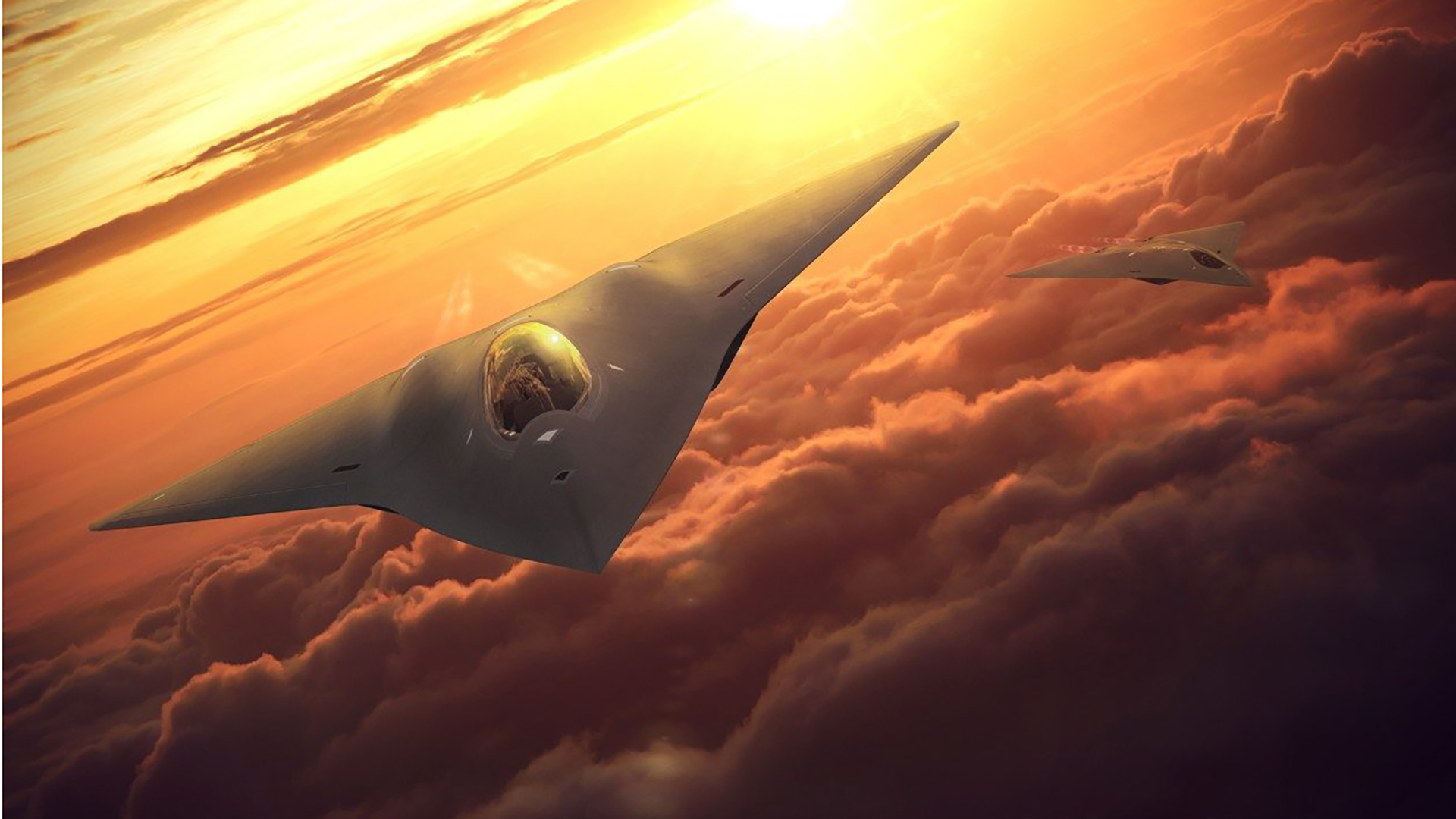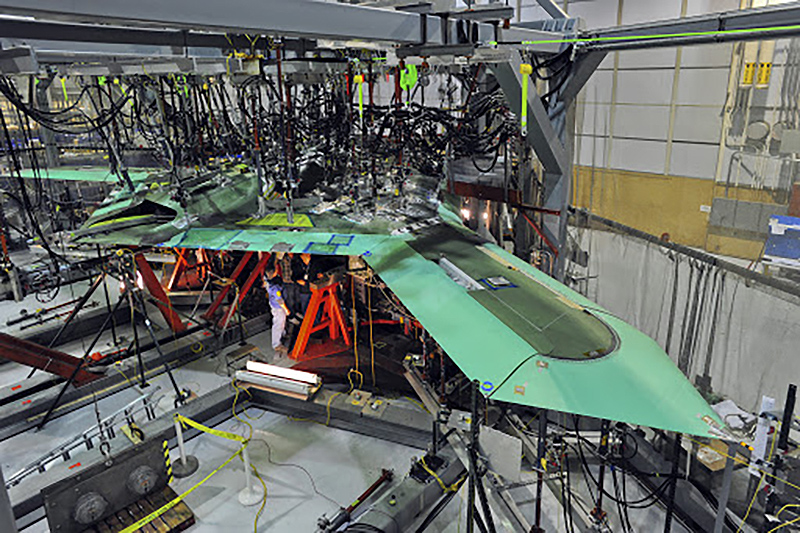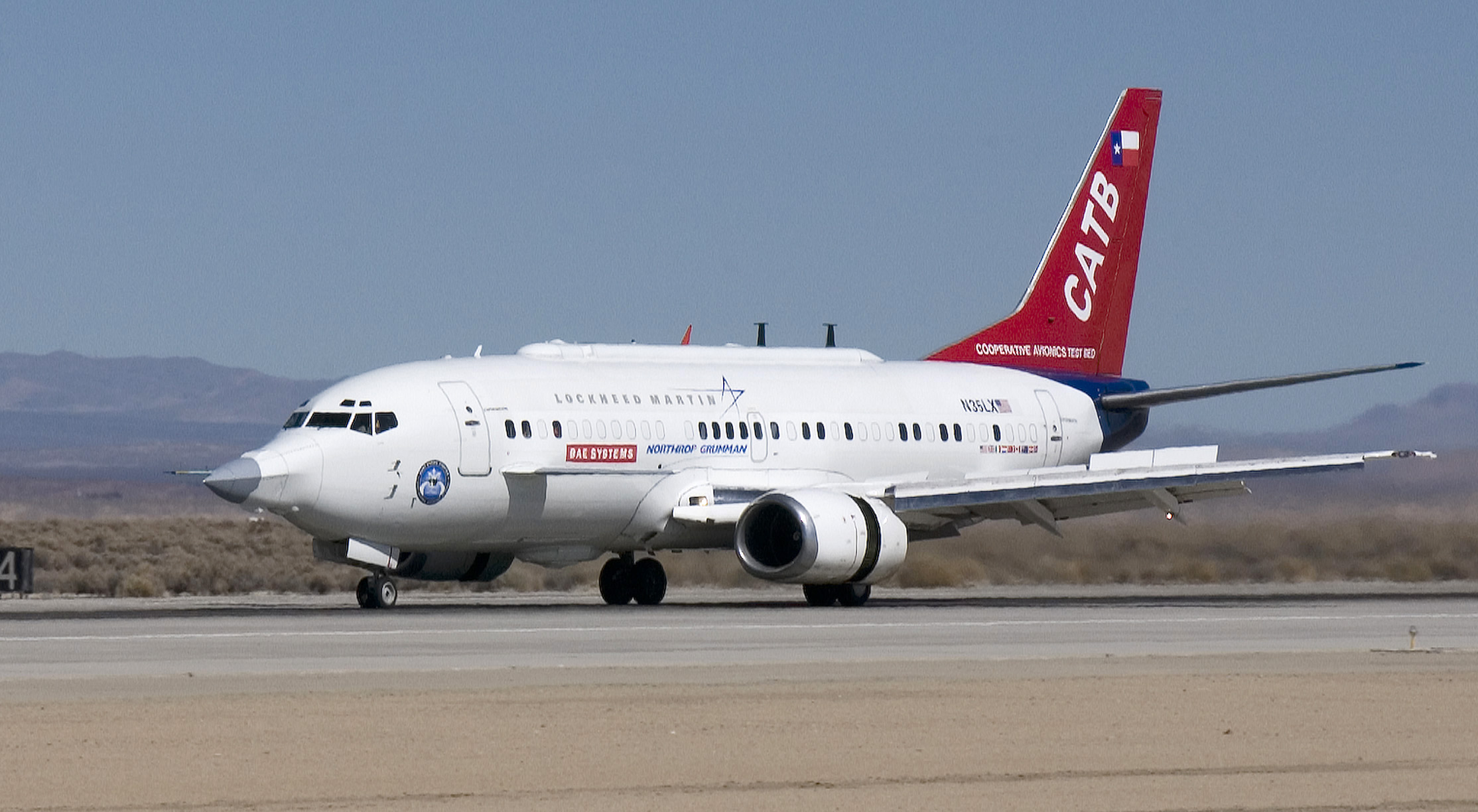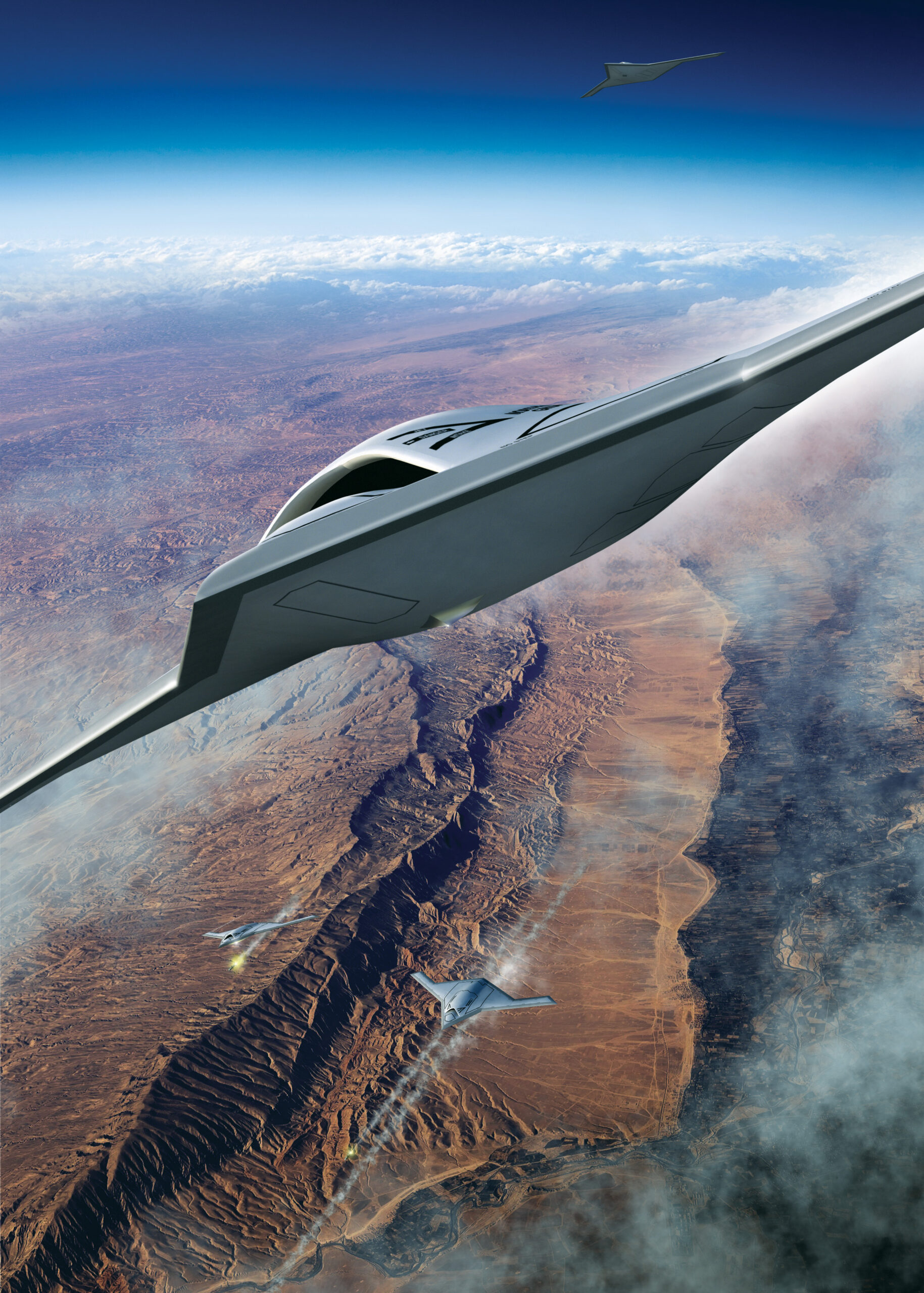There has been a ton of press about a Next Generation Air Dominance (NGAD) demonstrator of some type having already been designed and flown even as the program is still supposedly in its conceptual stages. While this sounds exciting, and it is, I think there may be a chasm between reality and what is being circulated even days after the news initially hit. Most importantly, it is very unlikely that this new ‘demonstrator’ is a ‘fighter,’ at least as we would traditionally define it.
The e-Plane Revolution The Air Force Wants
Let’s start with where this all came from. The news originated from an address from the Air Force’s acquisition chief, Will Roper, to the Air Force Association’s main annual symposium, this year’s iteration being virtual, which was remarkably on-brand for his presentation. In it, he talked about ushering in a new era where rapid design and experimentation of new aircraft and air combat concepts, including the ‘manufacturing’ and ‘flight testing’ of them will occur primarily in the digital realm.
An Air Force video presentation stated the following in regards to Boeing and Saab’s T-7 Red Hawk trainer, which has leveraged these concepts in its design and construction:
“Can something fly thousands of hours before it takes off, be laid out and assembled hundreds of times before any metal is even cut? Can something be designed, built, and tested, not by thousands of people, but by fewer than 200, using leading-edge design tools across a digital landscape, connected virtually across the globe? It can. It was.”
Roper stated the following recently about this concept, as well:
“It’s the assembly line, where people are doing work; what work is being done; the machines that do the work; the tooling. All digitally modeled, so you can optimize it,” he said. “You can get expensive tooling out if you can find a better substitute. You can change a process from requiring an artisan with years of training to one requiring a lower skill level.”
Weapon systems that use this aggressive digital design philosophy are being given the “e” prefix by the Air Force (the T-7 is now the eT-7, for instance), which is remarkably gimmicky and is likely to be transient in nature as these concepts of design, testing, and construction become widely adopted.

This is all part of a larger effort to break the traditional weapons development and procurement mold in order to remain competitive in an era of peer competition from the likes of China and, to some degree, Russia. During his address, Roper went on to note that things have gone beyond the “e-Plane” digital realm for higher-end projects, in particular in regards to the service’s ongoing and notably vague Next Generation Air Dominance initiative, stating:
“NGAD right now is designing, assembling, testing, and, in the digital world, exploring things that would have cost us time and money to wait for physical world results… The announcement isn’t that we just built an e-plane and have flown it a lot of times in a virtual world, which we’ve done. But if you think that we don’t care about physical-world results, we do. In fact, NGAD has come so far that the full-scale flight demonstrator has already flown in the physical world… It’s a full-scale flight demonstrator…”
Roper didn’t give any other major details about the ‘demonstrator’ as he was only cleared to mention that it existed, but did add that “All I can say is that the NGAD test flights have been amazing… Records have been broken…” Regardless of the lack of details, the metaphorical bomb had been dropped on the aerospace and defense press.

The idea that you can design, construct, and test in the digital realm to a degree of fidelity that it is good enough to then leverage advanced rapid prototyping on an aircraft-sized scale to efficiently check that work in the physical world, and then quickly reiterate the process if need be, sounds great. At the same time, it’s hard not to remain at least somewhat skeptical while also questioning just how new and revolutionary this concept actually is.
Aircraft and other major weapons programs have increasingly ballooned in cost and schedule over the years, in some cases taking decades to come to fruition. As a result, a number of other catchy quasi-innovations have come and gone in an attempt to transform what is seen as an unsustainable procurement cycle—fiscally, temporally, and strategically speaking.
Most notably, the concept of ‘concurrency,’ where you put something into production before testing it—another idea that relied heavily on digital design and testing—has failed miserably on multiple fronts over the last two decades or so. This new “e-Series” fad the Air Force is launching takes a more of a Skunk Works-like approach, but one that puts a heavier premium on the virtual side of things and uses physical manifestations of what happens there mainly to check the digital modeling that has been done.
It’s intriguing, but some would argue it is just a natural progression given the state of technology today and the clear unsustainability of traditional modes of shepherding a combat aircraft or other weapon system from a paper requirement to the battlefield. It’s also worth noting that for decades, computer-aided design and simulation have paved the way to a flying prototype. This new concept vastly accelerates the process and redistributes emphasis on digital development over physical development.
Even if this isn’t exactly something that is totally new, the fact that the Air Force is making it such a big deal and is actively defining it as its banner weapons development and procurement strategy could help in seeing that it is actually implemented in a successful manner. Is it streamlined and stable enough to realize Roper’s ‘Digital Century Series’ dream, where small batches of aircraft are pumped out in short order to meet a quickly morphing threat equation? We will have to wait and see, but it’s pretty clear he is so excited to tout it that he worked to disclose that it has been used to a successful degree, at least according to him, on arguably the Air Force’s most cutting-edge program.
With all that being said, let’s get back to the NGAD demonstrator.
Technology Demonstrators
I think people are looking at the idea of a ‘demonstrator’ a little differently than they should. Technology demonstrators are used to reduce risk and prove various technologies so that they can be incorporated into an operational system down the line. Technologies demonstrated can include everything from sensor and communications systems to propulsion systems to aerodynamic shaping to low-observable coatings to design and production methods, and more. Often times, a number of these aspects are rolled into a single demonstrator, although that doesn’t make it a prototype of the final product, by any means.
We have historical examples of classified technology demonstrators, such as Have Blue and Tacit Blue, the former having paved the way for the F-117 Nighthawk and the latter was key to making the B-2 Spirit a reality and much more. There was also the Bird of Prey that informed many aspects of future Boeing designs, including new construction methods and even visual stealth. Progenitors to the stealthy Black Hawks that would eventually be used to help kill Bin Laden also existed, and the X-44 that helped bring about the RQ-170 Sentinel. There are many, many more that were born in the unclassified realm, as well. Usually, these demonstrators are built for limited flight time and to achieve highly specific goals, and in some cases, they may be part of a series of iterations that improved upon other over time.

As you can see by the examples above, none of the aircraft listed looked exactly like the final product that would emanate from them, in fact, quite the opposite in most cases. But they would all be absolutely essential in bridging the technological divide and proving that the risk of moving forward with some of the technologies they incorporated was worth it.
The fact is that there are dozens of highly classified aerospace programs ongoing out of Area 51 and a handful of other clandestine locales at any given time. Some do not involve full-up unitary test articles or flying demonstrators, some do.
For the few that have been declassified, there are many, many more we will never know about, some of which are buried in unmarked graves around Groom Lake or stored away for viewing by the special few who are allowed access. It truly is the tale of America’s lost aerospace history, much of which may never be told. This has been the reality for over half a century, one which the Skunk Works ushered in initially.
If this has been going on decades ago, back to an age of slide rules and metal structures lording over composites, imagine how fast we can iterate test articles and demonstrators now with the help of digital design, simulation, modern manufacturing, advanced composite materials, and rapid prototyping. Some of those manufacturing methods are as closely guarded secrets as the shape of the aircraft themselves.
In fact, entire X-planes and test articles have been built primarily to better understand how to execute new types of composite construction and streamlined manufacturing that leverages advanced computer-aided design and rapid prototyping methods. In other words, just building a demonstrator using these new concepts can often be a major part of a demonstrator program’s goals.

All these new methods of designing and assembling aircraft, and especially the progress that has been made in producing so-called ‘out of autoclave’ large composite structures, among other new manufacturing methods, has made producing unique flying vehicles quickly a more attainable proposition than it was decades ago.
NGAD isn’t an airplane
The future of air combat will be highly cooperative in nature, leveraging advanced networks and intertwined families of disparate aircraft designed to achieve tactical objectives together. It will not be about new do all missions/carry all sensors super fighters. As such, it is only logical, if not essential, that this new way of thinking about aerial warfare has found a fertile medium in the form rapidly fielded demonstrators and test articles used to prove the concepts and technologies behind it. What would be far more troubling and surprising is if there were no NGAD-related demonstrators flying, or at least a demonstrator featuring some of the technologies behind what will be an entire family of new air combat systems related to it.
The death of the fighter, at least as we understand it today, is key to this. Spending years designing and building a ‘YF’ prototype of an exquisite new tactical jet, and then putting it into production many years after that prototype first flew, if it even makes it that far at all, is becoming a major enemy to America’s future claim on air superiority. It is this failing internal process that NGAD and the ‘e-Plane’ initiative is aiming at vanquishing just as much as an enemy’s fighter force or air defense network.
As such, it is very unlikely that NGAD is a ‘new fighter’ as many have extrapolated it to be. Instead, it will be a system of platforms and underlying shared technologies that will work together seamlessly to break the enemy’s decision cycle and dominate future air wars.
Could it include a manned, tailless, supercruising, long-range tactical jet with a relatively large payload? For the few of us that have been begging for this aircraft for many years, on its surface, this would be exciting. And yes, it is possible that something like this may work as one potential component of NGAD, but the hard truth is that capabilities have moved on, and it would serve as just a node in a larger and more diverse ecosystem that will primarily be unmanned. Once again, that is if such an aircraft were to even end up being part of NGAD at all, which seems doubtful at this point.

So, seeing that we are talking about an ecosystem of networked platforms that will share modular sensors and a common communications architecture here, not a new super fighter, we should expect far more demonstrators and test articles now than ever. Even ones that have existed before the NGAD program came to be could potentially be re-roled to support the testing of aspects of the program. As far as I understand it, this type of ‘recycling’ is anything but rare.
That being said, could a more mature demonstrator of a tailless, supercruising, long-range quasi-‘fighter’ (in name only, like the B-21 is a ‘bomber’) be flying? Yes, it’s possible. But it is unlikely to be a prototype as many have called it and other test articles or demonstrators would support other aspects of the program.
Alternatively, maybe a big tailless manned jet like the one so many are projecting onto NGAD, and blindly so, already existed and was simply reused to support NGAD’s objectives, but we have zero evidence of that. Even parts of the B-21 program and other existing clandestine initiatives could have worked to reduce the risk for NGAD, both passively by porting over proven technologies, and actively by being repurposed for the program.

So, it is not just possible, but probable that the NGAD demonstrator is very different than what most seem to expect it to be. In fact, the entire ‘fighter’ like concept associated with it could be far more of misdirection than reality. The ‘demonstrator’ could actually be an entire family of rapidly prototyped and already developed systems, with the networking and command and control architecture, shared sensors, and weapons being far more of a focus than the airframes themselves.
Above all else, it is certain that there is a ton of this type of rapid prototyping and flight testing occurring in the shadows today, well beyond the confines of the NGAD program. The secret nature of these initiatives means that people don’t see them, so it all seems new.
Even lumbering testbed aircraft that would traditionally support these new fast-moving ‘system of systems’ programs are likely to be less highly modified and costly to develop compared to their predecessors. Instead of stuffing an entire tactical aircraft’s worth of systems in one surrogate airliner or a business jet, testing functions could be spread across multiple, less elaborately modified testbed platforms that can perform various other duties for multiple programs. This would accelerate the testing process and makes configuration changes far less troublesome.
By testing different avionics on different test aircraft, either on flying test articles or testbeds, and then incorporating them together on a flying demonstrator, or flying demonstrators, to test different configurations, a far more flexible and streamlined model emerges. Also, as mentioned earlier, it is highly likely that any new family of airframes associated with the NGAD program will share sensors and communications systems, so integrating them together all on one aircraft would be counterproductive in some ways compared to the past when it was all about the development of a single do-all combat aircraft.

In fact, some components of the future air combat architecture may be just flying sensor nodes or carry no sensors at all. Instead, they would rely on the network tying together distributed capabilities to provide a far richer information set remotely. In the past, this information would have been more limited and less reliable in nature, as it would have been provided organically by a smaller number of high-value platforms. This new approach allows for a far more resilient, modular, and cost-effective combat force, one in which every tactical aircraft doesn’t need a full suite of sensors installed at all times. You can read more about the migration to a distributed aerial sensor network in this past piece of ours.
No Choice But To Change
Using rapid iterations of test articles to define requirements and then move to a more complex family of technology demonstrators later on is dictated by the strategic issues of our time as much as it is by cutting-edge manufacturing and design capabilities. The F-35 saga has taught everyone that the old way of doing things is a losing proposition going forward, even with skipping major steps via concurrency. By the time the system is fielded, it is already mismatched to the realities of the threats that exist and too much opportunity cost has been spent on it to deem it a worthy investment. Also, betting everything on one or two fighter designs for air superiority for half a century or more has now become an almost laughable premise.
So, adopting a Skunk Works-like model, which is all about getting to a prototype/demonstrator as fast as possible, for the development of this new family of aircraft seems to have offered the Air Force a potential new path forward. It’s one that is not without its own risks, but it could break the service’s damning addiction to traditional, and crippling, combat aircraft development and procurement structures.

The thing is, these ideas are now becoming mainstream, but five years ago I laid them all out and much more in granular detail in this past feature of mine. The technology has not been the limiter here, it has overwhelmingly been the cultural, political, and commercial tailwinds within and external to the Air Force. So, if anything, Will Roper and the Air Force brass should be commended for aiming for a revolution in a space where few others have ever succeeded in realizing a similar breakthrough. Then again, the reality is that the sustainability of American air superiority over its peers has become so dire that there really isn’t a choice. It’s literally become a factor of change or die.
So, the bottom line is two-fold. First off, the combat Air Force of the future is going to look drastically different than what it has looked like for decades past. As a result, we are likely entering into the twilight of the age in which the fighter reigns supreme within the air combat domain.
Second, and most importantly, is that if the USAF wasn’t testing its best future air combat hunches and different aspects of the complex ecosystem of technologies that will support its designs on the future of air dominance with flying demonstrators, that would be highly troubling.
But it’s still nice to get a confirmation of what we should already know.
Contact author: Tyler@thedrive.com
